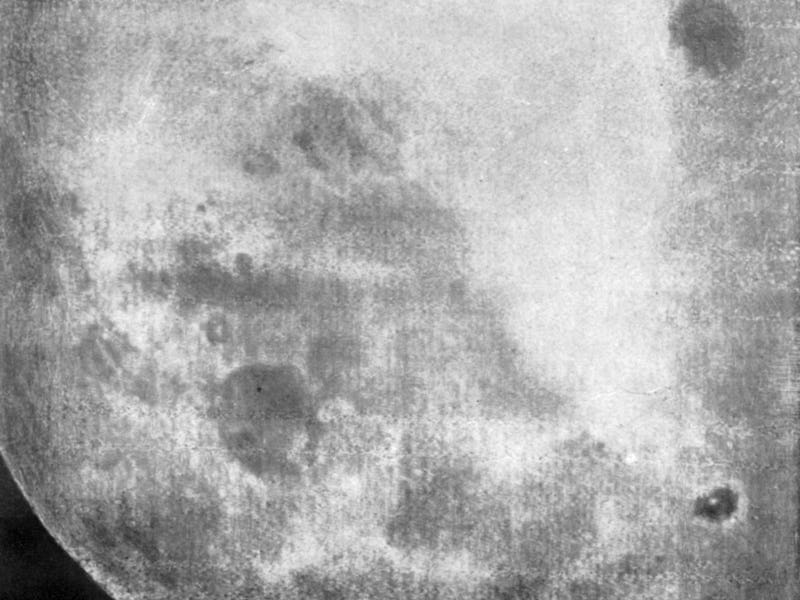One massive Moon feature could be the key to unlocking its entire history
The South Pole is the key part of so much to do with the Moon.

The South Pole-Aitken Basin on the Moon formed from a gigantic impact about 4.3 billion years ago. But that impact may have changed everything about the Moon and explained why the lunar farside looks so different from the nearside, the side we see from Earth.
“We know that big impacts like the one that formed SPA [South Pole-Aitken] would create a lot of heat,” said Matt Jones, a Ph.D. candidate at Brown University and lead author of a new study published in Science Advances. “The question is how that heat affects the Moon’s interior dynamics. What we show is that under any plausible conditions at the time that SPA formed, it ends up concentrating these heat-producing elements on the nearside. We expect that this contributed to the mantle melting that produced the lava flows we see on the surface.”
The side of the Moon that always faces towards Earth looks far different from the one that is hidden from us on the far side. The nearside is dominated by the lunar mare — the vast, dark-colored remnants of ancient lava flows on the mantle. The far side, on the other hand, is scarred with craters, with virtually no large-scale mare features. Why the two sides are so different has been one of the Moon’s most enduring mysteries.
In this new research, Jones and colleagues’ research helps confirm earlier studies that show how important the impact that formed the giant South Pole–Aitken basin was to the Moon’s formation history.
The South Pole-Aitken (SPA) basin is the largest and oldest recognized impact basin on the Moon. Its diameter is roughly 2,500 km or 1,550 miles. The Moon’s circumference is just under 11,000 km, meaning the basin stretches across nearly a quarter of the Moon.
Jones says this massive impact would have created a massive plume of heat that propagated through the lunar interior. The researchers argue that this plume would have carried certain materials — a suite of rare-Earth and heat-producing elements — to the Moon’s nearside. That concentration of elements would have contributed to the volcanism that created the nearside volcanic plains.
The near side contains a region called the Procellarum KREEP Terrane (PKT). That region contains a large amount of specific elements. KREEP stands for K (the atomic symbol for potassium), REE (rare-earth elements), and P (the atomic symbol for phosphorus). The KREEP terrane also contains the elements thorium and uranium, which decay radioactively and produce heat.
This heat would have allowed that part of the Moon to remain volcanic long after the rest of the Moon had cooled.
For the study, the researchers conducted computer simulations of how heat generated by a giant impact would alter patterns of convection in the Moon’s interior and how that might redistribute KREEP material in the lunar mantle. KREEP is thought to represent the last part of the mantle to solidify after the Moon’s formation and so would be part of the Moon’s mantle, the outermost layer.
Unlike previous models of the lunar interior of the mantle, Jones and his team saw in their model that any uniform distribution of the lunar crust would have been disrupted by the heat plume from the SPA impact.
Also, the KREEP material would have “ridden the wave of heat emanating from the SPA impact zone like a surfer.” As the heat plume spread beneath the Moon’s crust, the team said, that material was eventually delivered to the nearside. The team’s simulations showed that the South Pole-Aitken impact provided the best location and subsequent pattern of creating KREEP concentrations on the nearside, consistent with the known PKT anomaly.
“How the PKT formed is arguably the most significant open question in lunar science,” Jones said. “And the South Pole–Aitken impact is one of the most significant events in lunar history. This work brings those two things together, and I think our results are really exciting.”
The study was a collaboration between Jones and his advisor Alexander Evans, an assistant professor at Brown, along with researchers from Purdue University, the Lunar and Planetary Science Laboratory in Arizona, Stanford University, and NASA’s Jet Propulsion Laboratory.
This article was originally published on Universe Today by Nancy Atkinson. Read the original article here.